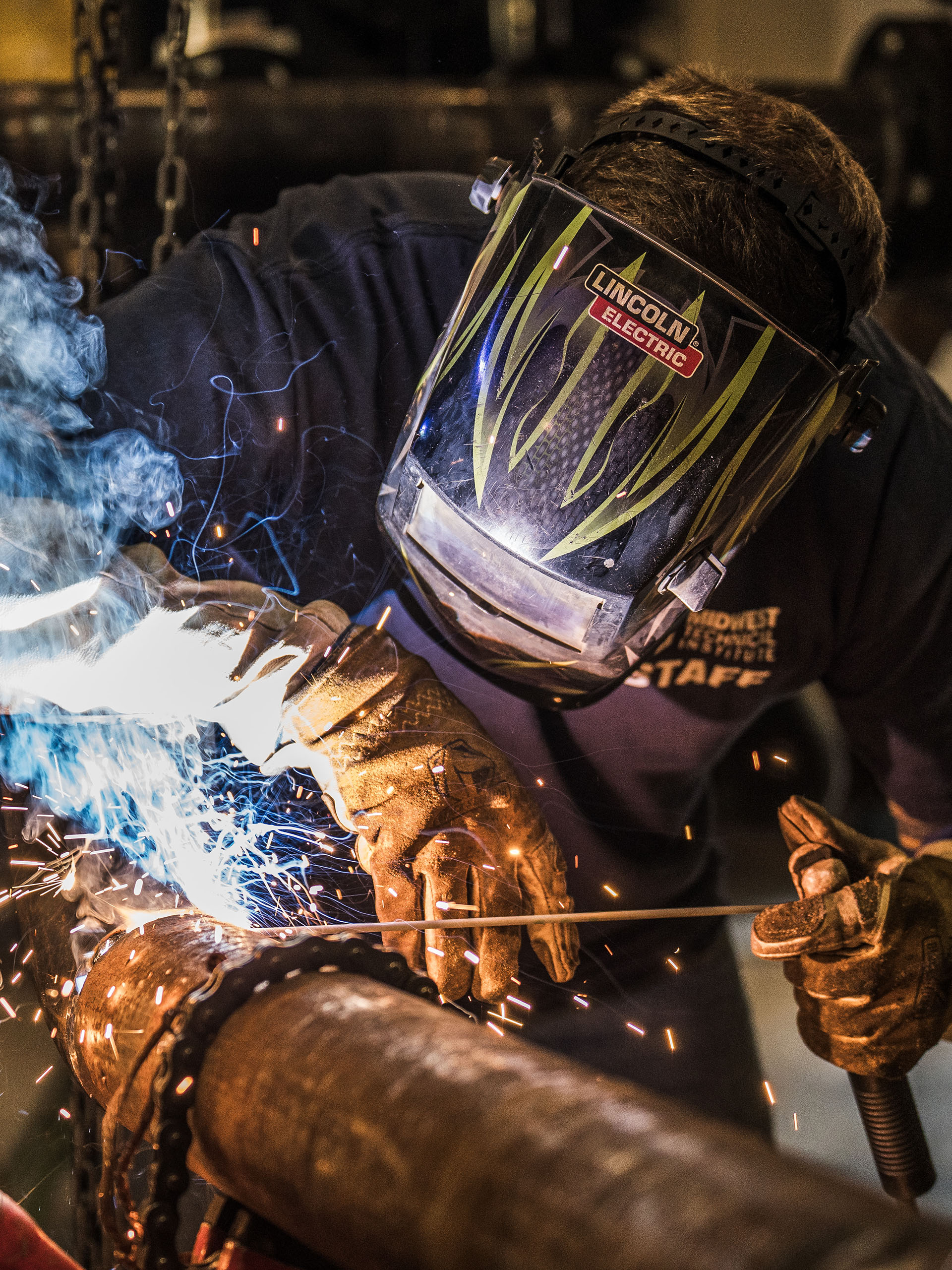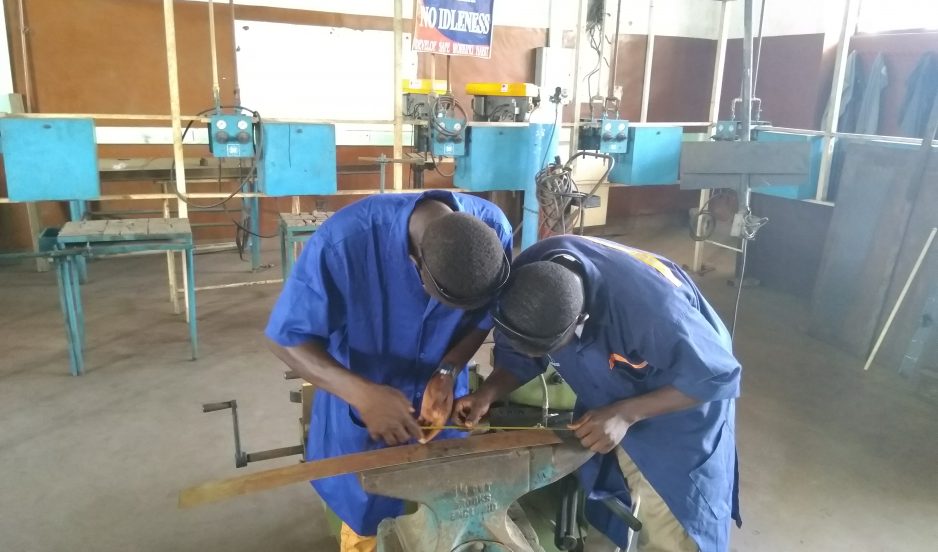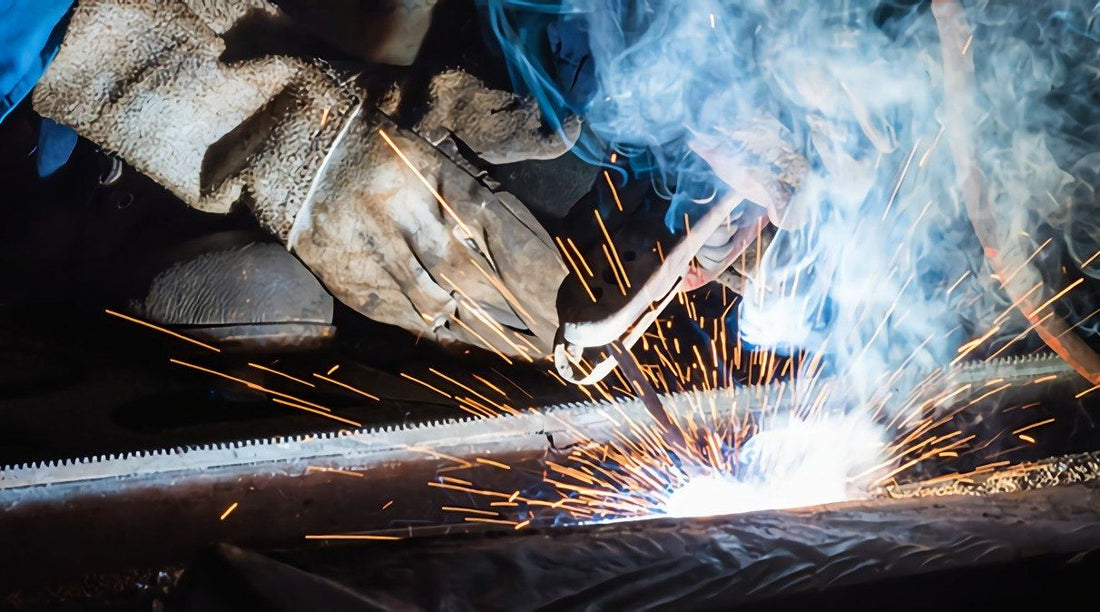Tips from Montana Mobile Welding and Repair Belgrade prevent porosity and distortion in welding
Common Welding Repair Issues and Just How to Address Them Properly
Welding repair work often run into a series of issues that can threaten the honesty of the final product. Typical troubles include inadequate penetration, porosity, and imbalance, among others. Each issue offers distinct obstacles that require specific strategies for resolution. Recognizing these issues is vital for welders aiming to improve their results and skills. This conversation will certainly check out these common welding repair service problems and efficient methods to resolve them.
Inadequate Penetration
Insufficient penetration occurs when the weld metal fails to totally fuse with the base product, leading to weak joints and possible architectural failings. This issue typically originates from insufficient warm input, incorrect electrode angle, or incorrect welding speed. Welders may experience inadequate penetration as a result of a mistake of the necessary criteria for a details material thickness or type. Furthermore, contamination on the base material's surface area can impede effective bonding, worsening the issue. To resolve poor infiltration, welders must assure proper setups on their devices and keep a tidy work surface area. Routine inspection of welds is advised to determine any shortages early, enabling prompt improvements and the avoidance of compromised structural honesty in welded settings up.
Porosity
Porosity is a typical flaw in bonded joints that manifests as small gas bubbles caught within the weld metal. This issue can jeopardize the honesty of the weld, causing minimized strength and possible failing under tension. Belgrade Fabrication. Porosity typically emerges from contamination, dampness, or improper welding strategies, which allow gases to get away right into the liquified weld pool. To resolve porosity, welders must assure proper surface area prep work, preserve a clean functioning atmosphere, and make use of ideal welding specifications. Additionally, picking the appropriate filler material and securing gas can reduce gas entrapment. Routine assessment and screening of welds can assist recognize porosity early, ensuring prompt restorative activities are taken, therefore protecting the top quality and dependability of the bonded framework
Imbalance
Imbalance in welding can develop from various variables, including improper setup and thermal expansion. Understanding the origin is necessary for reliable resolution. A number of improvement strategies are readily available to realign components and ensure structural stability.
Sources of Misalignment
Welding imbalance typically comes from a selection of underlying concerns that can endanger structural integrity. One primary cause is improper fit-up of parts before welding, which can bring about spaces and unequal surface areas. Variants in thermal growth throughout the welding procedure can also result in distortion, especially if the products being signed up with have various coefficients of development. In addition, poor securing and fixturing may fail to hold elements securely in position, bring about activity during welding. Improperly maintained tools, including welding devices and devices, may present inconsistencies in the weld bead, more adding to imbalance. Operator mistake, stemming from not enough training or experience, can additionally play a considerable function in developing misaligned welds.

Modification Methods Offered
Dealing with imbalance efficiently needs a mix of corrective techniques customized to the particular concerns handy. One typical approach is using components or jigs to hold components in the correct placement during welding, making sure constant alignment. In addition, pre-heating the products can help reduce distortion and improve fit-up. For considerable misalignment, mechanical realignment techniques, such as using hydraulic jacks or clamps, can be employed to correct the position before welding. Post-weld warm treatment might likewise be required to relieve tensions caused by imbalance. Mindful examination and adjustment throughout the configuration stage can protect against imbalance problems from becoming significant issues, promoting a smoother welding procedure and enhancing total structural honesty.
Distortion
Distortion is a common difficulty in welding that can develop from numerous aspects, including unequal cooling and heating. Comprehending the reasons of distortion is crucial for applying efficient avoidance methods. Addressing this issue not just enhances architectural stability yet likewise boosts the general quality of the weld.
Sources of Distortion
When based on the extreme warm of welding, products frequently undertake modifications that can result in distortion. This phenomenon primarily emerges from thermal growth and tightening during the welding procedure. As the weld area warms up, the material increases; upon cooling, it acquires, which can produce inner stresses. Additionally, irregular heating throughout a workpiece can intensify these anxieties, causing warping or flexing. The kind of product also plays a considerable function; steels with differing thermal conductivity and coefficients of development might react in a different way, causing uncertain distortions. In addition, inadequate joint layout and poor fixturing can add to imbalance throughout welding, enhancing the probability of distortion. Understanding these reasons is important for reliable welding repair work and avoidance strategies.
Prevention Techniques
Effective avoidance methods for distortion throughout welding focus on managing heat input and making sure appropriate joint design. Maintaining a regular warm input aids to lessen thermal development and tightening, which can result in distortion. Using strategies such as preheating the workpiece can likewise lower the temperature level gradient, promoting consistent home heating. Additionally, picking appropriate joint designs, such as T-joints or lap joints, can boost security and minimize anxiety focus. Applying correct fixturing to secure the workpieces in area further help in preserving alignment during the welding procedure. Finally, staggered welding series can disperse heat extra equally, stopping localized distortion. By using these techniques, welders can substantially lower the possibility of distortion and improve the general high quality of their welds.
Splitting
Splitting is a typical problem experienced in welding fixings, often resulting from various factors such as inappropriate cooling rates, product choice, or poor joint prep work. The incident of splits can significantly compromise the honesty of the weld, bring about prospective failures during operation. To address this issue, welders should first analyze the source, making certain that materials are suitable and appropriately selected for the details application. Additionally, managing the air conditioning rate during the welding process is necessary; fast cooling can induce stress and result in breaking. Correct joint design and prep work likewise add to lessening the risk. Applying these strategies can boost weld quality and longevity, eventually decreasing the probability of breaking in completed weldments.

Incomplete Fusion
A substantial problem in welding repairs is incomplete combination, which takes place when the weld metal does not appropriately bond with the base material or previous weld passes - Montana Mobile Welding and Repair Fabrication. This defect can result in weaknesses in the joint, possibly endangering the integrity of the welded structure. Aspects adding to insufficient fusion consist of insufficient warmth input, inappropriate welding strategy, and contamination of the surface areas being joined. To address this issue effectively, welders must ensure appropriate pre-weld cleansing and surface area prep work, as well as adjust their welding parameters to achieve appropriate penetration and combination. Regular assessment throughout the welding process can more info additionally help recognize insufficient fusion early, permitting timely rehabilitative steps to improve the total top quality of the weld
Overheating
While welding repairs can improve architectural stability, overheating offers a significant difficulty that can bring about product destruction. Too much heat throughout welding can modify the mechanical properties of steels, causing minimized stamina, boosted brittleness, and bending. This phenomenon is specifically critical in high-stress applications where architectural dependability is extremely important. Determining overheating can include aesthetic assessments for discoloration or distortion, as well as checking temperature level during the welding procedure. To mitigate the risks related to getting too hot, welders must use suitable techniques, such as controlling warm input, readjusting traveling speed, and making use of ideal filler materials. Additionally, implementing pre- and post-weld warmth treatments can help restore material residential properties and improve the total high quality of the repair, guaranteeing long-lasting efficiency and safety and security.
Regularly Asked Inquiries
What Are the Common Indications of a Welding Flaw?

Exactly How Can I Examine My Welds for High quality?
To test welds for quality, one can use visual examinations, ultrasonic testing, and radiographic methods. Each method assures architectural integrity, recognizes defects, and verifies adherence to defined standards, eventually boosting the reliability of the welded joints.
What Safety Precautions Should I Take While Welding?
When welding, one must prioritize safety and security by putting on suitable personal protective equipment, making sure correct ventilation, protecting flammable materials away, preserving a clean work area, and understanding surroundings to stop injuries and mishaps.
Can I Repair a Weld Without Renovating the Entire Joint?
Repairing a weld without redoing the whole joint is possible, relying on the damages (Belgrade Fabrication). Methods such as grinding, adding filler material, or utilizing a welding procedure can efficiently deal with details imperfections while maintaining the bordering framework
What Tools Are Essential for Efficient Welding Repairs?
Necessary tools for effective welding repair work include a welding maker, cord brush, grinder, protective gear, clamps, and filler materials. Each device plays an important function in making certain top quality and safety and security throughout the repair service procedure. Porosity generally develops from contamination, moisture, or improper welding strategies, which enable gases to run away into the liquified weld pool. Improperly conserved tools, consisting of welding makers and devices, might present variances in the weld grain, further contributing to misalignment. When subjected to the extreme warm of welding, products often undertake changes that can lead to distortion. Cracking is an usual issue come across in welding repair work, often resulting from numerous variables such as improper cooling prices, material choice, or inadequate joint prep work. A significant issue in welding repair services is insufficient combination, which happens when the weld steel does not adequately bond with the base product or previous weld passes.